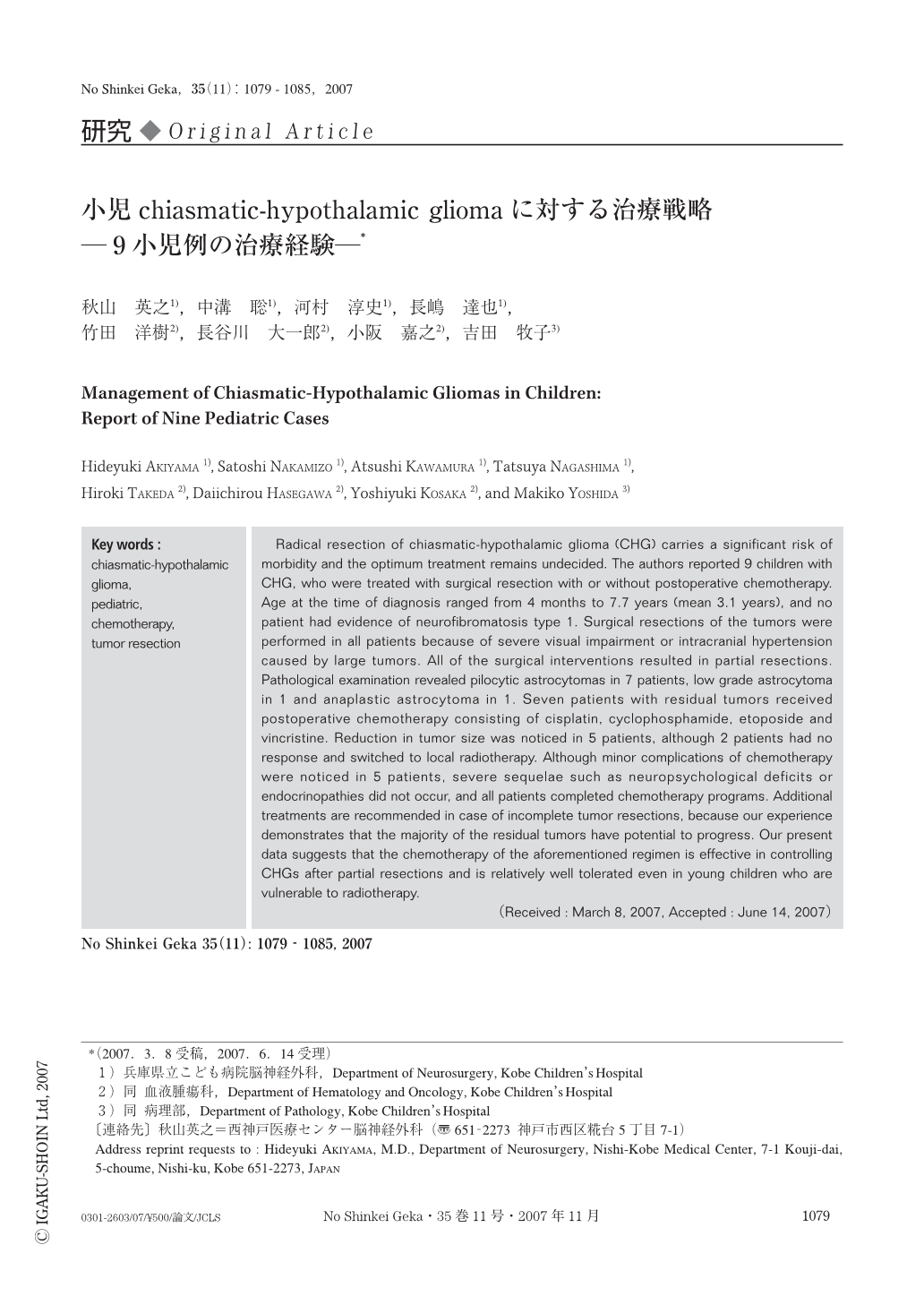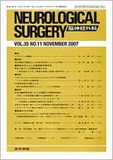Japanese
English
- 有料閲覧
- Abstract 文献概要
- 1ページ目 Look Inside
- 参考文献 Reference
Ⅰ.はじめに
Optic pathway gliomaは小児脳腫瘍の2~6%を占める比較的稀な腫瘍であり3,4,7,9,15),組織学的にはpilocytic astrocytomaが圧倒的に多いと報告されているが3,4),その自然経過は多彩で予測困難であることが少なくない4,7,15).約50%は無治療でも腫瘍の増大は来さないとされ10,15),また自然消退する症例も存在するためその治療方針については議論が多い3,12).しかし20~30%は重度の視力障害や発達障害,さらには腫瘍死を来す予後不良例であるとされており7,15),特に神経線維腫症を伴わない例,2歳以下の低年齢例,また視交叉から視床下部に及ぶ腫瘍を有する例は腫瘍の増大を来す可能性が高く2-4,15),治療に難渋することも少なくない.われわれはoptic pathway gliomaの中でも視交叉から視床下部に腫瘍の主座を有するchiasmatic-hypothalamic glioma(CHG)の小児例を過去に9例経験しており,それらの病態および腫瘍摘出と化学療法を中心とした治療経過を報告すると共に,治療戦略について検討を行った.
Radical resection of chiasmatic-hypothalamic glioma (CHG) carries a significant risk of morbidity and the optimum treatment remains undecided. The authors reported 9 children with CHG, who were treated with surgical resection with or without postoperative chemotherapy. Age at the time of diagnosis ranged from 4 months to 7.7 years (mean 3.1 years), and no patient had evidence of neurofibromatosis type 1. Surgical resections of the tumors were performed in all patients because of severe visual impairment or intracranial hypertension caused by large tumors. All of the surgical interventions resulted in partial resections. Pathological examination revealed pilocytic astrocytomas in 7 patients, low grade astrocytoma in 1 and anaplastic astrocytoma in 1. Seven patients with residual tumors received postoperative chemotherapy consisting of cisplatin, cyclophosphamide, etoposide and vincristine. Reduction in tumor size was noticed in 5 patients, although 2 patients had no response and switched to local radiotherapy. Although minor complications of chemotherapy were noticed in 5 patients, severe sequelae such as neuropsychological deficits or endocrinopathies did not occur, and all patients completed chemotherapy programs. Additional treatments are recommended in case of incomplete tumor resections, because our experience demonstrates that the majority of the residual tumors have potential to progress. Our present data suggests that the chemotherapy of the aforementioned regimen is effective in controlling CHGs after partial resections and is relatively well tolerated even in young children who are vulnerable to radiotherapy.

Copyright © 2007, Igaku-Shoin Ltd. All rights reserved.


